#traditional rootwork
Explore tagged Tumblr posts
Text
Perfumes Used in Your Practice.

In this post I'll wanna talk about perfumes or (parfum) in French and colognes. Now if you seen my other post on colognes I talk about this I a older post link at the bottom. In this post I want to dive a little deeper on these threes by .L.T.Piver
These are some that popular in Haitian Vodou, New Orleans Voodoo, Puerto Rico Espiritismo, Sanse , Santeria and so on. These are all ADR religions. All these perfume or lotions is what there were called are good for spiritual bath and what someone like me would use them for.
But let's get into it; starting with the earliest one.

Starting with the 1885, Alphonse Heliotrope Blanc”, the first Eau de Cologne. This is another good one can be used in protecting and ward off negative energy, bad energies, Great for spiritual baths like cleanings can be added with coconut water Florida water etc for your baths.

Next we have Reve d'Or: Released in 1889. This old school scent is characterized by woody and aromatic accords. This would be used also in spiritual baths and is giving to the Vodou Spirits such as Erzulie Dantor, also Oya, Mami Wata. If your into neopaganism this is used for the Crone aspect of the Goddess.

Last we have POMPEIA" was created in 1907, it floral with an oriental note. This type of smell would have been popular in Ancient Egypt used in baths as well or worn by someone like Cleopatra. Some will offer it to La Sirène, Yemaya, Saint Clare of Assisi, sometimes Simbi even the Mothered Goddess in New age
Now the three together if you follow a ADR religion like it can represent the three Orishas like Oya, Oshun and Yemaya. In Vodou it would be Erzulie Dantor, Erzulie Freda and La Sirène.
In let's say Espiritismo I was told The Three Marias" generally refer to the spirits of Mary Magdalene, the Virgin Mary, and Mary Cleophas (also called Faith, Hope and Charity.) 👇

It can represent the three goddess. The Maiden, Mother, Crone. 👇

They can represent The Moirai or three Greek Goddesses of Fate and Destiny, or Moirae Mythopedia, also known as the Fates. They are Clotho, Lachesis, and Atropos. 👇

Last if your into Voodoo or Vodou The Marasa. Etc basically the twins or sisters.👇

Is the two links I mentioned.
#like and/or reblog!#spiritual#google search#follow my blog#southern hoodoo#traditional hoodoo#rootwork#ask me anything#traditional rootwork#rootwork questions#Vodou#african diasporic#african spirituality#Perfumes#Colognes#message for help#send a message#community support
42 notes
·
View notes
Text







#you scared go to church#hoodoo#conjure#rootwork#roots#voodoo#beauty#black power#black people#orishas#witchy#black spirituality#african traditional religions#level up#black history#black women#black men#melanin#black magic#gentillmatic#black tumblr#black beauty#black experience#spiritual awakening#spirituality#folk magic#plant based#ifa#obeah
897 notes
·
View notes
Text
Tag yourself!
{made with the Ancestors and Great Spirits of the African Diaspora in mind, here's what I associate with each day of the week and the children of the diaspora born therein:
Monday's child is fair of face
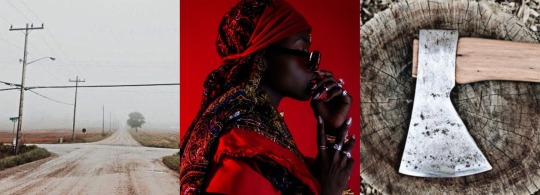
Tuesday's child is full of grace

Wednesday's child is full of woe
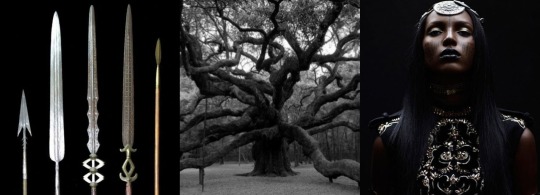
Thursday's child has far to go
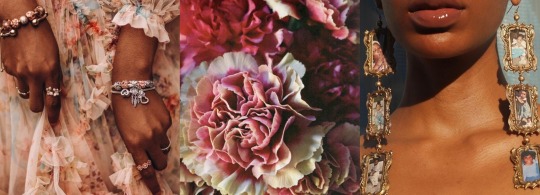
Friday's child is loving and giving

Saturday's child works hard for a living

And the child born on the Sabbath day
Is bonny and blithe, good and gay.
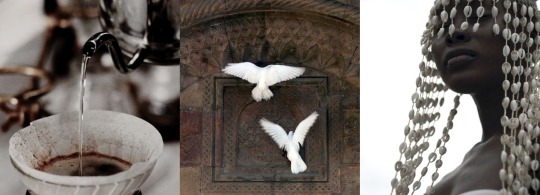
Monday: masters of finding new roads and moving forwards, tearing down blockages, trailblazers and warriors. Artists of all kinds, writers, poets, singers.
Tuesday: embodiment of thunderstorms, winds, omens, they're powerful conjurers with hot hands, always busy, always moving. Often times scholars, historians.
Wednesday: defenders, protectors, of humanity and nature as a whole. Warrior spirits at their core, but also great diviners and mediums.
Thursday: eloquent muses of the arts of love and war alike, great beauties who lead armies with equal charm and force. Sweetening, love and luck workings come easy to them.
Friday: personification of abundance and status. A commanding presence. Building legacy, great manifestors and conjurers, specially for work and finances.
Saturday: guardians of waters and the beyond. Community leaders, gifted healers, divine messengers. Carrying all the wisdom of the Elders and Ancestors.
Sunday: priests and priestesses that defy status quo, very old Ancestors coming back to reshape and rebirth reality. They will enter your life and purge every aspect of it.}
#Hoodoo#Rootwork#Conjure#Black Conjure#African american conjure#Hoodoo aesthetic#Hoodoo academia#I've had this in my drafts for so long!!!#enjoy :')#ATRs#ADRs#African Traditional Religions#African Diasporic Traditions#African Diasporic Religions#African Diaspora#afrolatine#afrolatinos
445 notes
·
View notes
Text

45 notes
·
View notes
Text

The History of Candle Magic in Hoodoo, American Folk Magic & Across the Globe.
Hey there, Venusian Dudes and Dolls! 🌟
Lately I've been obsessing over candle magic and how it's so important to a multitude of cultural practices. In modern magic many practitioners use candle rituals to hone our intent and hopefully manifest the energies we desire. Maybe it's the ADHD hyperfocus but this has always fascinated me. So today I'm taking you on a journey through the bright history of candle magic—a practice steeped in mysticism, transformation, and a universal yearning to connect with the divine.
Our story begins in the ancient world, where the first candles were more like rushlights—bundles of reeds soaked in animal fat, used in ancient Africa in Egypt around 3000 BCE. These early lights weren’t just practical; they carried symbolic weight, often illuminating temples and rituals that called on divine favor. The use of reed bundles soaked in animal fat began as a practical solution to meet the need for light after sunset. Reeds, abundant along the Nile River, were a natural and accessible resource, and animal fat was a byproduct of cooking or butchery. While reeds and animal fat were early components of lighting practices in ancient Egypt, they were not the sole origin of oil lamps.

The evolution of oil lamps was influenced by a combination of available materials, cultural ingenuity, and practical needs, leading to more sophisticated designs over time.
As Egypt was a hub of trade and culture, particularly during the height of the Pharaonic and later Ptolemaic eras, these lighting methods spread along trade routes. Merchants, travelers, and nomadic communities carried this technology to other parts of North and Sub-Saharan Africa and to other lands outside of Africa.
These Egyptian oil lamps, crafted from pottery, stone, or metal, featured a reservoir for oil—commonly castor oil, sesame oil, or animal fat—and a spout to hold a plant-fiber or papyrus wick. Oil lamps were integral to daily life, lighting homes, workplaces, and public spaces. Beyond their practical use, they held significant ritual importance, often used in temples and religious ceremonies to honor deities and ensure divine favor. The soft glow of these lamps was also believed to guide souls in the afterlife, with many placed in tombs as part of funerary rites. This duality of function—practical and spiritual—reflected the Egyptian emphasis on the interconnection between earthly existence and the divine.
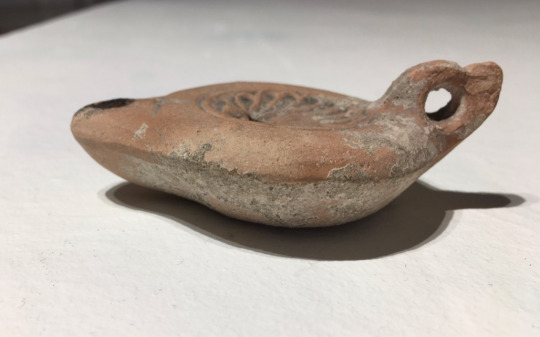

In ancient Rome, oil lamps evolved further, becoming more ornate and widely used. Romans preferred terracotta and bronze lamps, often featuring intricate designs or depictions of gods and myths. Olive oil was the most common fuel, symbolizing prosperity and abundance. Roman oil lamps illuminated homes, streets, and public baths, while their use in temples and during festivals underscored their religious significance. They also served as symbols of status, with wealthier individuals commissioning elaborate designs.

The Romans later perfected the art of candle-making with wax, creating the first dipped candles and creating objects of both daily use and sacred purpose. To these ancient peoples, the flame wasn’t merely light; it was life, a tiny sun held in the palm, connecting the earthly with the celestial.
As time flowed into the medieval era, candles found a deep and meaningful home in religious ceremonies. Catholicism and Christianity, in particular, adopted candles as symbols of divine light and spiritual purity. Every flicker in a darkened cathedrals and church became a prayer in itself, illuminating the path to salvation. The association of candles with prayer and intention became so ingrained that they naturally merged with the folk magic practiced in villages across Europe.


Here, we see some of the beginnings of candle magic as a personal, intimate practice. Villagers would light candles while uttering blessings, casting protections, or even weaving spells of love, fertility, or prosperity. The Renaissance added yet another layer to candle magic. The rebirth of Hermeticism and ceremonial magic brought a new understanding of how candles could be used to align with cosmic forces. Practitioners believed that the color of the wax, the timing of the flame, and the intention behind the lighting could channel planetary energies, summon spirits, or manifest desires. It’s no wonder that candles became indispensable in the practices of witches, alchemists, and mystics, serving as tools to focus will and amplify power.
Across the globe, candles begin to carry similar meanings. In Hindu traditions, oil lamps and candles were offered to deities as a gesture of devotion and to invoke blessings. In Afro-Caribbean practices, candles became central in rituals honoring ancestors and spirits, their light seen as a beacon guiding energies from the unseen world into the physical realm.
The History of Candle Magic in the Americas
The history of oil lamps and candles in America ties into the colonial and early settler experience. In the early 1600s, colonists brought tallow candles, made from animal fat, as their primary light source. These candles were smoky, smelly, and burned quickly, but they were accessible to all. By the 1700s, whale oil lamps became popular among wealthier settlers, producing a cleaner and brighter flame. However, enslaved and impoverished communities often relied on homemade tallow candles or simple oil lamps, repurposing whatever materials were available. The multicultural blending that defined American folk magic brought spiritual significance to these utilitarian objects.
In Hoodoo, a system of African American folk magic which is deeply multi-cultural and rooted in African, Indigenous, Judaistic and other practices, oil lamps and candles became potent tools for connecting with ancestors, spirits, and divine forces. Oil lamps were the original form of candle magic before the advent of electricity, and were longer lasting the candles. Hoodoo practitioners, often called rootworkers or conjure doctors, would craft oil lamps as magical devices by combining oils, herbs, minerals, and even personal items of the target (like hair or nails) inside the lamp. When lit, the flame was believed to activate the spell, drawing in spiritual assistance or amplifying the worker’s intention. These lamps were often made from everyday materials like mason jars or old lanterns, emphasizing the resourcefulness and ingenuity of Hoodoo practitioners in the face of oppression and scarcity.

As time progressed, Hoodoo folk magic evolved with the times. Candles were introduced and now play a central role in Hoodoo. Each candle color carried a specific symbolic meaning: green for money, red for love, black for protection or banishing negativity, and white for purity and spiritual clarity. Practitioners would carve their intentions directly onto the candle or dress it with oils and herbs before lighting it. As the candle burned, its flame became a channel for prayer, intention, or communication with the spiritual world.
In Appalachian Granny magic, another eclectic and practical form of folk magic rooted in the mountains, candles and oil lamps were tools of necessity that took on a mystical role. The grannies, as these wise women were lovingly called, used candles and lamps in rituals of protection, healing, and divination. For example, a Granny might place a candle in a window to ward off spirits or guide a loved one safely home. They also believed in the "reading" of a candle’s flame or wax drippings, interpreting flickers, cracks, and shapes as signs or messages from the spiritual realm. Oil lamps were similarly revered in Appalachian folk magic. Often kept burning in the home, they symbolized the hearth and protection of the family. These lamps were sometimes used in protective magic, with certain oils or charms placed inside to keep malevolent forces away. If illness struck a household, the lamp’s light might be used as a focus for healing prayers or blessings.
The multicultural blending that defined American folk magic brought spiritual significance to these utilitarian objects. African enslaved people integrated their knowledge of oils, herbs, and spiritual practices into their use of lamps and candles. Meanwhile, European settlers added their traditions of candle-burning spells and charms. In Appalachia, the influence of Celtic, Germanic, and Native American traditions created a unique fusion of spiritual and practical uses for light.
By the 19th century, paraffin candles became widely available, offering a longer burn time and cleaner light. These advancements allowed magical practices to become more elaborate, with practitioners using candle wax readings or crafting intricate oil lamp spells.
Metaphysical Reason why Lamps & Candles Work in Ritual
The power of oil lamps and candles lies in their unique ability to combine all the elements. Both oil lamps and candles are transformational tools, combining the elements of fire (flame), earth (wax or oil), air (smoke), and spirit (intention). The flame is fire; the melting wax, oil, glass or clay base is earth; and the smoke it produces, air. This elemental balance makes candles perfect for spell work, because it seeks harmony between the practitioner and the universe. When a lamp or candle burns, it transforms solid oil or wax into smoke and heat, symbolizing the alchemical process of turning intention into reality. No wonder they’re seen as conduits for wishes, blessings, and change. Their light is seen as a direct link to the divine, symbolizing clarity, hope, and the power to transform one’s reality. Whether guiding spirits, warding off evil, or sending a prayer to the heavens, these lights illuminate more than the physical world— oil lamps and candle can light the path to magic itself.

So, the next time you light a candle for a spell, a wish, or even just to create a cozy vibe, remember that you’re tapping into a practice as old as time itself. From ancient Egyptian temples to your modern altar, candles have always been there, carrying our hopes and dreams skyward, one flicker at a time. Whether you’re burning a dressed candle in a conjure spell or lighting an oil lamp to protect your home, know that you are a part of a global lineage of witches, priests, magicians, grannies, and root workers who have used the power of flame to ignite change, protect the vulnerable, and honor the divine.
xoxo
Lyonessa
#hoodoo#paganism#ancient egypt#ancient rome#ancient greece#candle magic#pagan community#witches of color#baby witch tips#baby witch#history#witch content#witch community#haitianvodou#black femininity#conjure#rootwork#folk magic#african traditional religons#oil lamp#witchblr#beauty spells#spellcasting#spellcraft#witchcraft#spells#beginner witch#wicca#hoodoo heritage month#hoodoo community
15 notes
·
View notes
Text
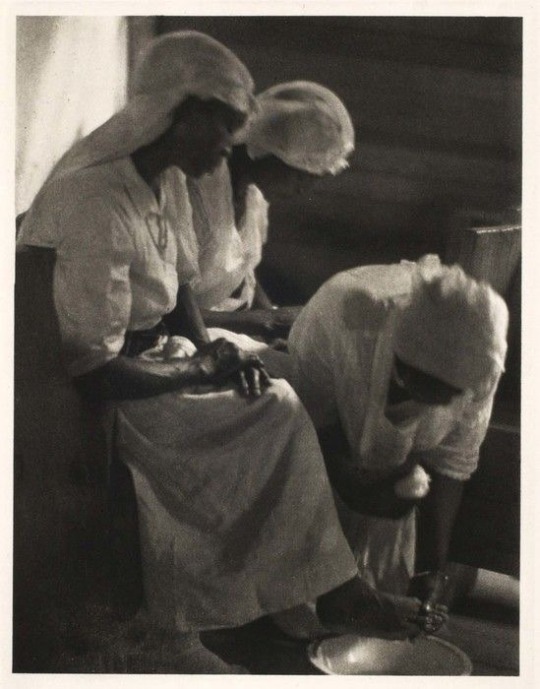
"Holiness Hoodoo: Rediscovering Ancestral Roots Without Jesus"
The term "Holiness Hoodoo" may leave some people puzzled, so allow me to clarify its meaning. In my view, Holiness Hoodoo represents a return to the traditional practices of my ancestral lineage, a way to decipher who I am and what my purpose entails. Many of our forebears were devout Christians, and this undeniable fact forms the backdrop of my spiritual journey. Despite the complex relationship that many Black Americans have with the Bible due to the scars of slavery, it's essential to remember that it wasn't the Bible itself that caused harm, but the people wielding it as a tool of oppression.
As I delved deeper into the realms of ancestral magic, I began to notice striking parallels with church practices. To some, I seemed too "churchy" for hoodoo, and to others, too "hoodoo" for the church—there appeared to be no middle ground. However, I've come to understand that my connection to my ancestors is the cornerstone of my spiritual practice. I've realized that perhaps the reason some individuals struggle to communicate with their spirits is that they try to venerate them through African traditions, tarot, or other methods their ancestors might not recognize.
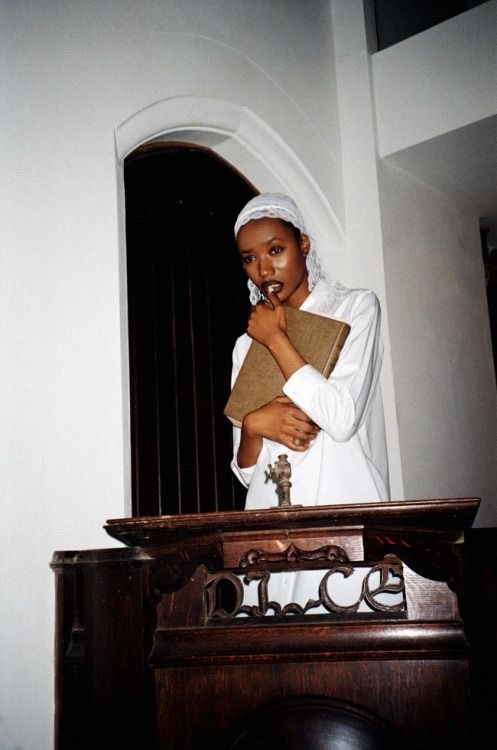
The Bible, as a potent tool in hoodoo, is not revered because we live by its teachings but because it contains powerful scriptures. My mother, for instance, believed in Jesus, yet she was a practitioner of hoodoo—a tongue-speaking, spirit-conjuring woman. Her approach, which I now embrace, is what I refer to as "Holiness Hoodoo."
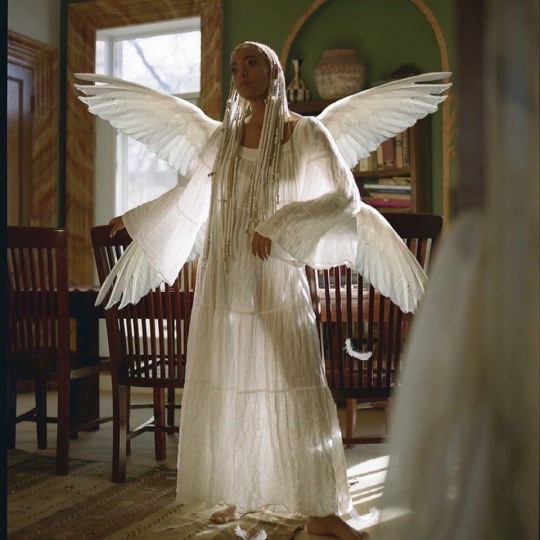
So, what does Holiness Hoodoo look like for me?
1. Setting the Atmosphere:
I play inspirational or gospel music that resonates with my specific needs, allowing it to fill my home as I clean, pray, or perform spiritual work. Gospel music serves as a direct conduit to my ancestral spirits, and sometimes, when I hear a song I haven't listened to in a while, an ancestor's presence is assured.
2. Keeping a Bible on the Altar:
While I don't read the Bible frequently, I keep it open to the Psalms as an offering to my spirits. The Bible also serves as a powerful tool of protection, and specific verses and pages can function as talismans and petitions.
3. Baptisms:
Baptism, in my lineage, is a ritual practice to wash ourselves of sins and start anew. It's not just for babies; it can also cleanse generational curses and traumas passed down from parents.
4. Shouting:
Listening to gospel music, I engage in the practice of shouting, a form of ecstatic dance that connects me with my spirits. This practice fills me with light and often results in downloads of ancestral wisdom.
5. Laying of Hands:
I perform the laying of hands, a practice I'll discuss in more detail in the future. It's distinct from Reiki and is a significant part of my spiritual tradition.
6. Fasting:
Fasting is a part of my spiritual practice, serving as a means of both elevating my spiritual consciousness and cleansing my body. I firmly believe that one's health plays a pivotal role in their spiritual journey.
Holiness Hoodoo is about preserving the traditions of our ancestors and finding connections with them. It doesn't rely on dogma or strict religious doctrine; instead, it is a pathway to tap into the wisdom and spirituality that has been passed down through generations. In this practice, there is no room for being "too churchy" or "too hoodoo"—it's about embracing the rich tapestry of our heritage and harnessing it for a profound and authentic spiritual experience.
Please make sure you SHARE! SHARE! SHARE! For more if you enjoyed this post.
Don’t forget My MInd and Me inc is still seeking donors for The Peoples Praise House! Even if you cannot donate, SHARE ! Thank you !
@conjuhwoeman on twitter
@realconjuhwoeman on IG
#hoodoo#medium#ancestor veneration#witch#rootwork#black women#conjure#prophet#tutnese#luxury#traditional hoodoo#holiness
143 notes
·
View notes
Text
click the title link to DOWNLOAD This Book for FREE from THE BLACK TRUEBRARY

Would you like to find a way into the lost world and forgotten art of Hoodoo Rootwork and Conjure?
Are you looking for a modern guide on traditional African-American folk magic to cast powerful spells, craft conjuring oils and mojo bags, and build mighty altars to guarantee positive outcomes in your love life and professional endeavors?
Hoodoo was born out of sorrow and desperation, as a weapon and a defense, from the faith and resilience of the African slaves that adapted their religious tradition to the treacherous New World. As the world changed, Hoodoo adapted incorporating Native American herbal healing traditions and European religions and magical traditions, building a syncretic powerful folk magic system that works!
First prohibited, then ridiculed and commodified, Hoodoo has always been shrouded in secrecy and passed on quietly from generation to generation for fear of reprisal, contempt, and abuse and to this day is hard to find reputable sources on conjure and Rootwork. But don’t be discouraged!
I am proud to present The Hoodoo Bible: The 7-in-1 Root Doctor’s Companion to Black Folk Magic: an in-depth, all-encompassing, powerful 7-books-in-1 bundle that has recorded our rich heritage of herbal magic, traditional rootwork, and divination practices.
More exhaustive than any other book on the market, thoroughly researched and written with ease of use in mind, The Hoodoo Bible will accompany you through the spiritual path that our ancestors have beaten for us to explore the potent and practical magic of Hoodoo to claim justice, invoke protection, and find love, luck, and success.
With over 1000 authentic Hoodoo workings, these seven volumes will bring Hoodoo alive to budding rootworkers and adept practitioners alike:
The first volume will explore the history, culture, principles, fundamentals, and ethics of Hoodoo, giving you the theoretical groundwork you need to master the craft.
With the second volume the fun really begins! This practical how-to Hoodoo guide for beginners has everything you need to start practicing Rootwork and Conjure.
By the end of the third volume, you can start to call yourself a Root Doctor. With 275+ magical herbs, roots, spices, and curios, this book will help you craft powerful conjuring oils, spiritual baths and floor washes, magical teas and tonics, herb bundles and garlands to accomplish amazingly mighty Rootwork.
In the fourth volume you will find 30+ money spells, 25+ love spells, fertility spells, healing spells, and justice spells, with easy step-by-step instructions including a special chapter on inscribed spells and a complete guide on crossroads spells.
The fifth volumedelves into advanced spellcasting and conjure, teaching you how to conjure spirits, protect your home, banish your enemies, get revenge, and lay sneaky tricks. It includes a special chapter on graveyard spells and foot track magic.
In the sixth volumeyou will explore Hoodoo divination with step-by-step techniques for bone throwing, dice casting, and Hoodoo tarot. With a special chapter on dream divination and omens.
The seventh and last volume explores candle magic. This complete guide will teach you how to build an altar and use the magic of fire and the psalms to achieve your goals, be it money, success, luck, or love.
Applying Hoodoo magic to everyday life will help you achieve your goals in your private and professional life and along the way you will discover that working the roots has also sharpened your intuition, enriched your life, and prepared you for whatever may come your way.
So are you ready to discover the lost world and forgotten art of Hoodoo Rootwork and Conjure?
click the title link to DOWNLOAD This Book for FREE from THE BLACK TRUEBRARY
#The Hoodoo Bible • The 7-in-1 Root Doctor’s Companion to Black Folk Magic: Herb and Rootwork#Conjure Oils and Mojo Bags#Easy and Advanced Spells#Candle Magic and Divination to Get your Mojo Workin#HOODOO#Hoodoo Bible#African American Traditional#Root Work#Rootworkers#Conjure#THE BLACK TRUEBRARY
27 notes
·
View notes
Text
Recently watched The Skeleton Key again and was not too pleased with how Hoodoo was portrayed (especially with them saying it started in Louisiana, Hoodoo started throughout the south simultaneously). I’m noticing that the more and more I watch a movie, the more I kinda be like.. why did they portray it like that??
But I wanted to ask all of my ATR practitioners out there, hoodoo, voodoo, lucumi, isese, santeria, obeah, etc., have you ever watched a movie and felt as if your practice was portrayed in its authentic and complex form??
#this is for the diaspora#african traditional religions#atrs#Santeria#palo mayombe#hoodoo#voodoo#obeah#candomble#isese#lucumi#21 divisions#African diaspora#diasporic religions#representation#cultural representation#culture#African American#afro caribbean#afro latina#black spiritualism#black spiritualist#african american spirituality#hoodoo tumblr#black spirituality#black tarot readers#african american culture#rootwork tumblr#rootworker tumblr#black tumblr
18 notes
·
View notes
Text
Doing conjure behind a gas station is a uniquely American delight.
#traditional witchcraft#witchcraft#animism#sorcery#magick#folk magic#astral projection#spells#spirit work#occult#conjure#rootwork
13 notes
·
View notes
Text

Just a backwoods witch in her natural habitat! Self portrait.
#my art#my artwork#traditional art#traditional drawing#mixed media#original art#kentucky gothic#southern gothic#appalachian gothic#Kentucky#appalachia#cryptid#cryptidcore#cottagegore#dark cottagecore#goblincore#backwoods#southern satanist#witch#pagan#satanist#rootwork#witchcraft#self portrait
13 notes
·
View notes
Text
Using Spanish Moss For Money.

In a earlier post I talked about Spanish Moss and how it grows in the south, how it can be used and other info. (Links at the bottom)
In this post Im giving you some workings using that moss that you won't find in any so-called hoodoo books. These are real workings handed down and used in the south by root workers in the hoodoo tradition/ religion.
What's A Money Bowl? It's a bowl of items that is created and used to draw in money to help get that little extra change you need for what ever reason.
Simple but effective Money Bowl 👇
First get you a bowl and put in some fenugreek . To draw in money and add a few coins or bills if you like to put in it. Last burn a green candle over it. Once it's burns down place that bowl in your kitchen or on a table by the door. and that will bring money into you home.
Now what happens if you already made a good money bowl and you need just a bit more for something like a gap in your budget that needs to be filled. 👇
First Working: If you add some moss into your fenugreek bowl by making a little hold in the center of the fenugreek and putting in the moss to fill that hole, now you will start see money coming to you to help fill in the hold in your budget, for that extra money.
(How does that work, if there's a hold in your budget and Moss draws in, then putting a hold in your bowl to represent the hold in your wallet and your filling it with Moss to draw in that extra money)
Second Working: If you need money fast and there is someone that owes you money here's how to get it. (and it can work for court)
Take a strip of paper and write down the person who owes you money, Put it into a ball of Spanish Moss and nail it above your front door and that person will be compelled to give it to you.
(Why? Because Moss is also used to put out not just draw in but in this case having the person's name surrounded by moss will have your boss mind on money, having it in your house bring it to you)
Now if you want a little more control on that person you can add a little controlling oil to the Spanish moss. (Just a little)
2. Now if you don't have anyone who owes you money just add money drawing oil to the ball. Pray the 23rd psalm and Isaiah 55:11 then place it above your front door. Open the door and say "Money Flows In To Me Rapidly". (Take your time because I want you to Invision that money coming to you)
Now Read And Understand This One: We all want that money to keep coming in right and there are many ways to draw it in but what happens afterwards? This is something that a book don't teach.
How do we keep that money staying in and not going out the door once we have it, so we don't have to doing the working again.👇
Third Working:
Take your Moss and make a ball add in ether some finger nail and toe nail clippings and put it into the moss ball and put it above your back door. This will help keep your money from going out.
2. You can also do both the front door working and this back door working one together, (If you don't have a back door just put it in the back of the home somewhere)
3. Another way to compell is to make a clay doll and take some moss and pook it in the clay doll. Write the person's name on paper and pin it to the clay doll. (This will compell them to give you their money)
(This works good if let's say you need extra hours to make some extra money, do this to your boss for those extra hours, Or if you are in court add the person's name who makes that decision on the money you'll get it)
Is will help bring money in.
Forth Working/Baths: Some old school workers would use Moss like this.👇
For this you can add a few pinches of moss to your bath and read the 23rd psalm and Isaiah 55:11. (Can also add a few drops of money drawing oil in your bath with it)
This helps bring you money.
2. You can wash the bottom of your feet with moss and it will lead you to money .
NOW I want you to remember something if you add anything like cinnamon to these working to help or try to speed things up. That person may only give you some of the money you asked for because you never gave them enough time to get all of it.
Links Below:
My Earlier Post On Spanish Moss.
https://www.tumblr.com/conjuremanj/738505086681153536/the-souls-of-the-spanish-moss?source=share
War Water. That Moss can be added too.
https://www.tumblr.com/conjuremanj/724019926522789888/war-water?source=share
#like and/or reblog!#google search#follow my blog#southern hoodoo#traditional hoodoo#ask me anything#traditional rootwork#rootwork questions#Money bowl#Hoodoo money#Money Spell#rootwork spell#african american spirituality#like and comment#follow if you like#message for help#message me
20 notes
·
View notes
Text

#not like us#hoodoo#roots#rootwork#black history#black culture#black community#nostalgic#conjure#african america history#african traditional religions#aesthetic#beauty#melanin beauty#melanin#melanated#black women#black woman appreciation#magic#magical girl#witchy#level up#ethnobotany#botanist#lifestyle#quiet luxury#mentality#earth#plants#plant based
134 notes
·
View notes
Text
Root of the Month for May 2023: Ragweed
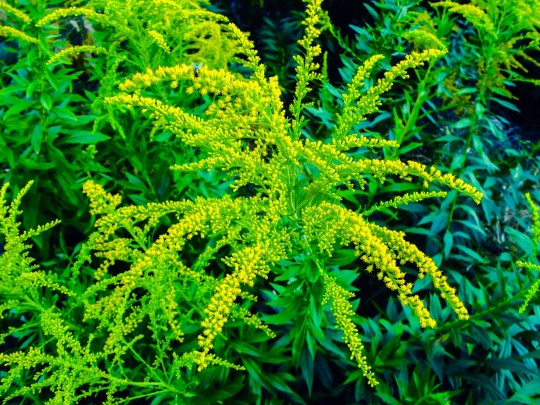
Taxa(Family/Genus/species): Asteraceae/Ambrosia/artemissifolia or trifida
Folk Nomenclature: N/A
Common Name: Ragweed, Low Ragweed, Annual Ragweed, Ambrosia
Native Locality: Tropics & Subtropics of Southwestern USA & Northwestern Mexico; can be growing in fields, gardens, roadsides, etc. all across the U.S - most abundantly in the Eastern & Midwestern states.
Phenotypic Traits: Grows upright growing eaves that look almost fern-like, feathery and green. You will also notice that ragweed leaves look hairy. The flowers on the plant are also useful for ragweed identification. The flowers on ragweed are yellow and long, like streamers; similar to Goldenrod
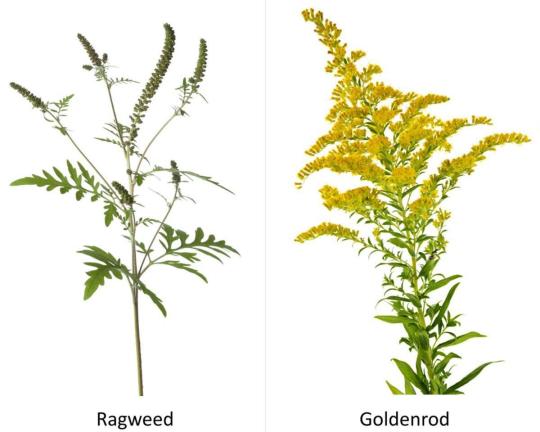
Parts Used: Leaves
Gender: Cold
Planetary Ruler: Venus
Elemental Ruler: Water
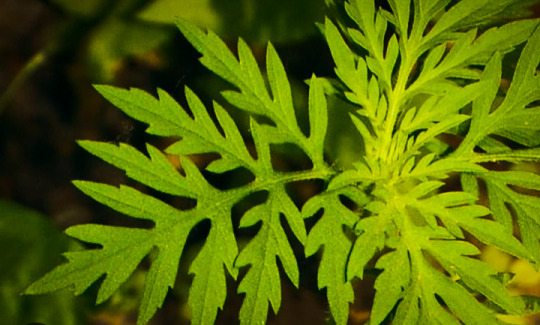
Traditional Usage in Rootwork: Used to drive away all fear. Useful for when a boost of courage is needed
Traditional Medicinal Usage: Soothes irritation from insect bites. Eases nausea, menstrual discomfort, skin infections, & fever. Can also be used a laxative. PLEASE NOTE: Ragweed pollen is a major seasonal allergy trigger.
🌟 FINAL copies of The 2023 Hoodoo's Calendar are available for purchase! Subscribe to the official e-newsletter for the latest updates & exclusive content access. https://thehoodoocalendar.square.site 🌟
#ragweed#rootwork#rootworkers#rootworking#juju#the hoodoo calendar#hoodoo#hudu#hoodoos#ambrosia#medicinal#traditional medicine#herbalism
19 notes
·
View notes
Text
lazy hoodoo tip: I'm making sweet potatoe pie from the Bress 'n' Nyam cookbook and it calls for cinnamon and nutmeg. Both are good for abundance and prosperity so you might as well add a lil juju and bake with intention.

Also, Bress 'n' Nyam is a dope cookbook to add to your collection. It's full of great Gullah Geechee recipes and I haven't had a recipe miss yet.
#hoodoo#conjure#rootwork#african traditional religions#lazyhoodoo#abundance#prosperity#luck#money#kitchen witch#baking#soul food#gullah geechee
25 notes
·
View notes
Text

In light of a tragedy involving Mystic Lipstick aka Akoya, here are few quick witch tips that are invaluable for practitioners of any skill level.





#hoodoo#the love witch#black femininity#black spirituality#bipoc mental health#mental health#practical witchcraft#witch blog#witches of color#haitianvodou#aphrodite#paganblr#occult#astrologersofinstagram#daily astrology#astrology#witchcraft#witchcraft community#jewitchery#brujas of tumblr#brujería#conjure#rootwork#folk magick#african traditional religons#african american folk magick#mental heath support#new age#Wicca#tarot community
53 notes
·
View notes
Text

Holiness Hoodoo: Speaking in tongues
In my exploration of the question, "Do any other religions practice speaking in tongues?" I arrived at a resounding "NO." More specifically, I discovered that speaking in tongues, or Glossolalia, is primarily native to Pentecostalism. This revelation left me pondering why the internet isn't more updated with information about the practice of speaking in tongues in African Traditional Religions (ATRs), as this practice predates the knowledge of Christ or Pentecostalism.
My curiosity extends to how this practice correlates with spirit possession in other cultures. Speaking in tongues is often seen as a form of being possessed by the Holy Spirit. I wonder how this phenomenon compares to the concept of being "ridden" by the lwa in Vodoun rituals, a practice prevalent in various religious traditions, such as shamanism, Yoruba, Santeria, and Spiritism. In these cultures, spirit possession is not only accepted but viewed as a privilege or a sign of divine favor and great power. The question arises: does it matter if one understands the spoken words, especially when the person speaking has no control over them or doesn't comprehend their meaning?

I shared that I grew up in a Pentecostal environment, where I witnessed numerous instances of tongues speaking, the laying on of hands, Holy Ghost encounters, and more. While I have not been gifted with the ability to speak in tongues myself, my sister has received this "mantle." I acknowledge that it might still be possible for me to receive this gift; it simply hasn't manifested yet.
A striking discrepancy lies between the way the Bible describes speaking in tongues and how it is practiced in the Black church. These two interpretations do not necessarily align. The way in which the Black church practices speaking in tongues could be considered blasphemous by those who do not understand the cultural context.
For instance, 1 Corinthians 14:27-28 (ESV) advises that if anyone speaks in a tongue, there should be only two or at most three speakers, and someone should interpret. If there is no one to interpret, individuals should remain silent in church and speak to themselves and to God. However, I recall watching my mother enter profound trances in church and speak in tongues. She often conveyed familial messages, sometimes from loved ones or ancestors. On occasion, her utterances were messages directly from the Most High. This suggests that, despite our belief that we are communicating solely with the Most High, we may inadvertently be connecting with ancestral spirits.
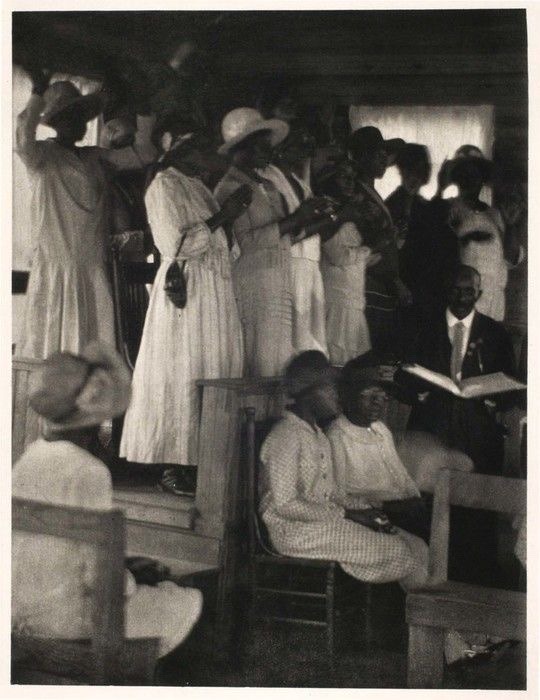
As previously mentioned in my post about "shouting," Black people approach worship differently, and our cultural influence extends to various religions we encounter. This manner of worship has roots that run deeper than mere survival; it dates back long before the era of colonization. Our unique approach to worship resonates deeply with the source, and we have been able to utilize the Bible to justify our practices.
Acts 2:4 (ESV) states that the disciples were "filled with the Holy Spirit and began to speak in other tongues as the Spirit gave them utterance." In the Black church, particularly the ones I attended, deliverance magic, akin to exorcism or the casting out of demons, was prevalent. When witnessing the casting out of a spirit, the individual performing the exorcism would often speak in tongues. My mother would emphasize that she wasn't addressing the person but the spirit.
Mark 16:17 (ESV) further supports this practice, stating that "these signs will accompany those who believe: in my name, they will cast out demons; they will speak in new tongues."
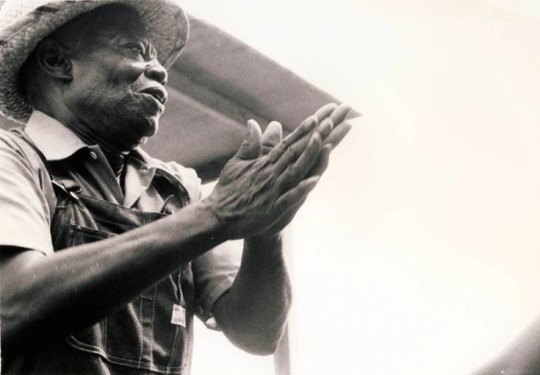
Despite its significance, many people question those who speak in tongues, doubting the authenticity of their utterances. They may ask, "What are they saying? Can you translate it?" The answer is generally no, as this conversation resembles a language of light—words only decipherable by the person and the spirit. Sometimes, the person speaking in tongues is unaware of the message once they emerge from the trance.
The discourse conducted through speaking in tongues is not meant for everyone's ears. It is a communication meant for specific individuals, often excluding the person speaking. Consequently, I do not advocate listening to or repeating others' tongues or mimicking the practice. The spirit being communicated with may not be in everyone's best interest. Speaking in tongues is a form of spirit communication bestowed upon only a few.
Please make sure you SHARE! SHARE! SHARE! For more if you enjoyed this post.
Don’t forget My MInd and Me inc is still seeking donors for The Peoples Praise House! Even if you cannot donate, SHARE ! Thank you !
@conjuhwoeman on twitter
@realconjuhwoeman on IG
#holiness#hoodoo#medium#ancestor veneration#witch#rootwork#black women#conjure#prophet#tutnese#luxury#old hoodoo#traditional hoodoo#seer#Bible#speaking in tongues
29 notes
·
View notes